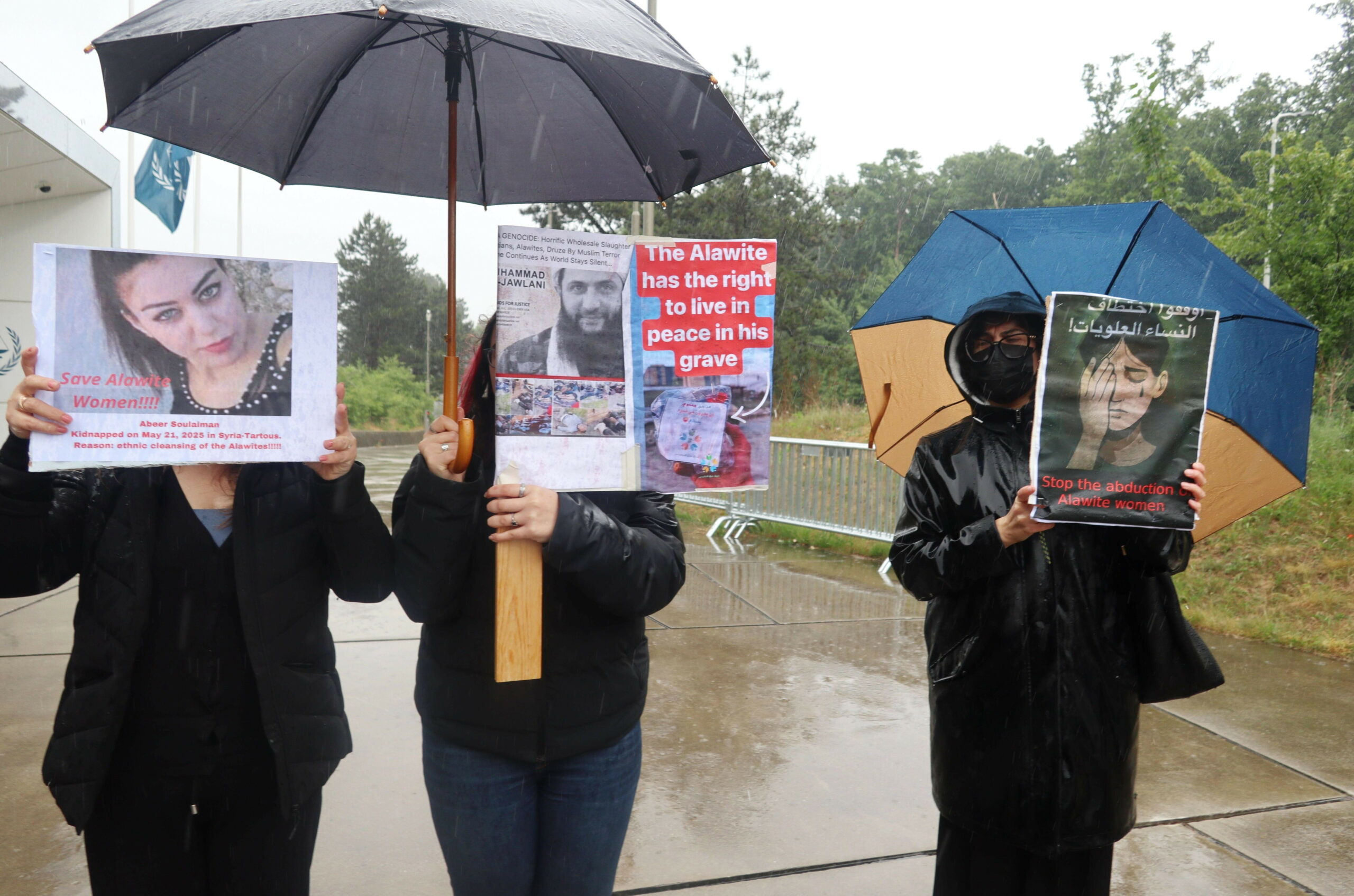
The crowd outside the Abbas family home erupted in tears and ululations as a tired young woman stepped out of a white sedan. Video of her return—her face pale, her steps unsteady—flooded Syrian social media. For a week, people had shared posts claiming that 23-year-old Hiba Abbas was kidnapped on the Jableh–Latakia highway. Some said she’d been sold. Others claimed she was killed. But when Hiba came home, no one knew what had really happened.
Her silence and her family’s refusal to explain only deepened the confusion. To some Syrians, her case proved that abductions of women along the coastal region—the Alawite heartland—were real and widespread. To others, it underscored how rumors and political agendas had turned personal tragedies into weapons in the country’s ongoing information war.
From Tragedy to Talking Point
In early 2025, dozens of online posts began to circulate about the alleged kidnapping and murder of Alawite women in Homs, Tartous, and Latakia. The stories were horrifying—mutilated bodies, ransom demands, masked men targeting women because of their faith.
But when investigators from Syria’s Ministry of Interior began to follow up, they found a very different picture. “There is no, so to speak, ‘phenomenon of women being abducted in the Syrian coast,’” Interior Ministry spokesman Nouruddin al-Baba told Levant24 in an exclusive interview. “Many women reported missing had left of their own free will—escaping family violence, poverty, or social pressure.”
Baba said a special committee formed by Interior Minister Anas Khattab reviewed dozens of supposed kidnapping cases. “Genuine abductions are very rare,” he said. “But the abundance of fake kidnapping reports has overshadowed the real ones.”
Online Chaos and Weaponized Rumors
The Ministry’s findings highlight how Syria’s fragmented media environment—flooded with social media influencers, activists, and partisan channels—has blurred the line between fact and fiction.
“Investigations by platforms such as EekadFacts and BBC have shown hundreds of thousands of fake accounts, and some estimates reach up to two million, spreading false reports and rumors about Syria,” Baba said. He alleged that some of these accounts were backed by “hostile countries such as Israel or Iran,” while others were run by Syrians, loyal to the Assad regime, trying to “tarnish the reputation of the new Syrian state.”
Analysts say such manipulation thrives in a context of fear and distrust. Kidnapping stories are emotionally charged, easily shared, and fit neatly into the sectarian narratives that have shaped Syria’s postwar politics.

Foreign and local media outlets, including Reuters and DW, have reported abductions of Alawite women, some of them verified. One Alawite woman, identified only as Nora, told DW she was kidnapped near Jableh, abused, and ransomed before being released and fleeing the country. Her case, like others cited by Reuters and the UN Commission of Inquiry, reflects genuine suffering—but also how selective coverage can reinforce one-sided perceptions.
While such reports emphasize Alawite victims, they often overlook abductions affecting Sunni Kurds and others in the country’s north east. A regional analyst in Syria, who spoke on condition of anonymity, noted that “the kidnapping phenomenon in Syria cuts across communities—no sect or region has a monopoly on tragedy.”
Shattering the Narrative
The cases of Nagham Issa and Mira Jalal Thabet show how quickly false claims can spiral into national controversies. In February, social media exploded with news that Issa, from Akrama, Homs, had been kidnapped and killed, her family extorted for ransom. Photos of a mutilated corpse circulated online, allegedly hers. “We believed she had been kidnapped and killed,” her sister-in-law Jumana al-Ali told Syria TV. “It caused us great suffering.”
Weeks later, the truth emerged: Nagham had fled to Lebanon with her partner, Badr Asaad al-Qasim. “After months of searching, it turned out she was alive,” Ali said. “The photos were fabricated to make the story look like a murder.” Nagham herself appeared in a short video, denying any involvement of security forces.
Another supposed victim, Mira Thabet, reportedly kidnapped in Talkalakh and “forced into marriage,” was later found to have eloped with her lover. Numerous outlets interviewed Mira and her husband, Ahmad, confirming she had left home voluntarily after her family opposed their relationship. These stories—of false reports spreading faster than facts—feed public cynicism.
Government Steps and Public Skepticism
Interior Minister Khattab announced that his ministry will hold a press conference presenting verified data and details of each case, promising “comprehensive and transparent coverage.” But online, skepticism remains high.
Critics accuse authorities of downplaying real abductions and failing to protect women. Meanwhile, others argue the narrative of “targeted Alawite women” is being amplified to discredit the administration and sow sectarian fear.

Baba insists the Ministry’s approach balances caution and openness. “We avoid hasty denials that could compromise our perspective or trigger reactions,” he said. “At the same time, we cannot leave the door open for misinformation.”
Between Fear and Fatigue
Even as the Ministry works to separate rumor from reality, families of the missing continue to live in uncertainty. Some—like the relatives of Haifa Anas al-Homsi and Mai Salloum—still wait for news. Snack Syrian, an Arabic language outlet, noted that several women who disappeared in Latakia and Tartous later returned home, but details of their cases remain murky. “Security is not measured by the number of women returned,” they wrote, “but by society’s ability to prevent abduction in the first place.”
For Baba, the broader issue is public trust. “We are working to improve security and communication with the public,” he said. “Each month, the Ministry gains more experience and resources to enhance its work.” Yet for many Syrians, the damage caused by the misinformation storm—the fear, the sectarian framing, the eroded confidence in institutions—will take far longer to repair than any single case of disappearance.
In Syria’s fractured postwar landscape, abductions have become more than crimes—they are currency in a struggle over truth itself. Verified kidnappings do occur, but far more common are the stories twisted, magnified, or fabricated to fit competing political agendas.
As Baba told Levant24, “Genuine abductions are very rare, but the abundance of fake kidnapping reports has overshadowed the real ones.” His words may not satisfy those still searching for loved ones, but they point to a grim reality: in a country scarred by conflict and propaganda alike, even the truth can vanish without a trace.









